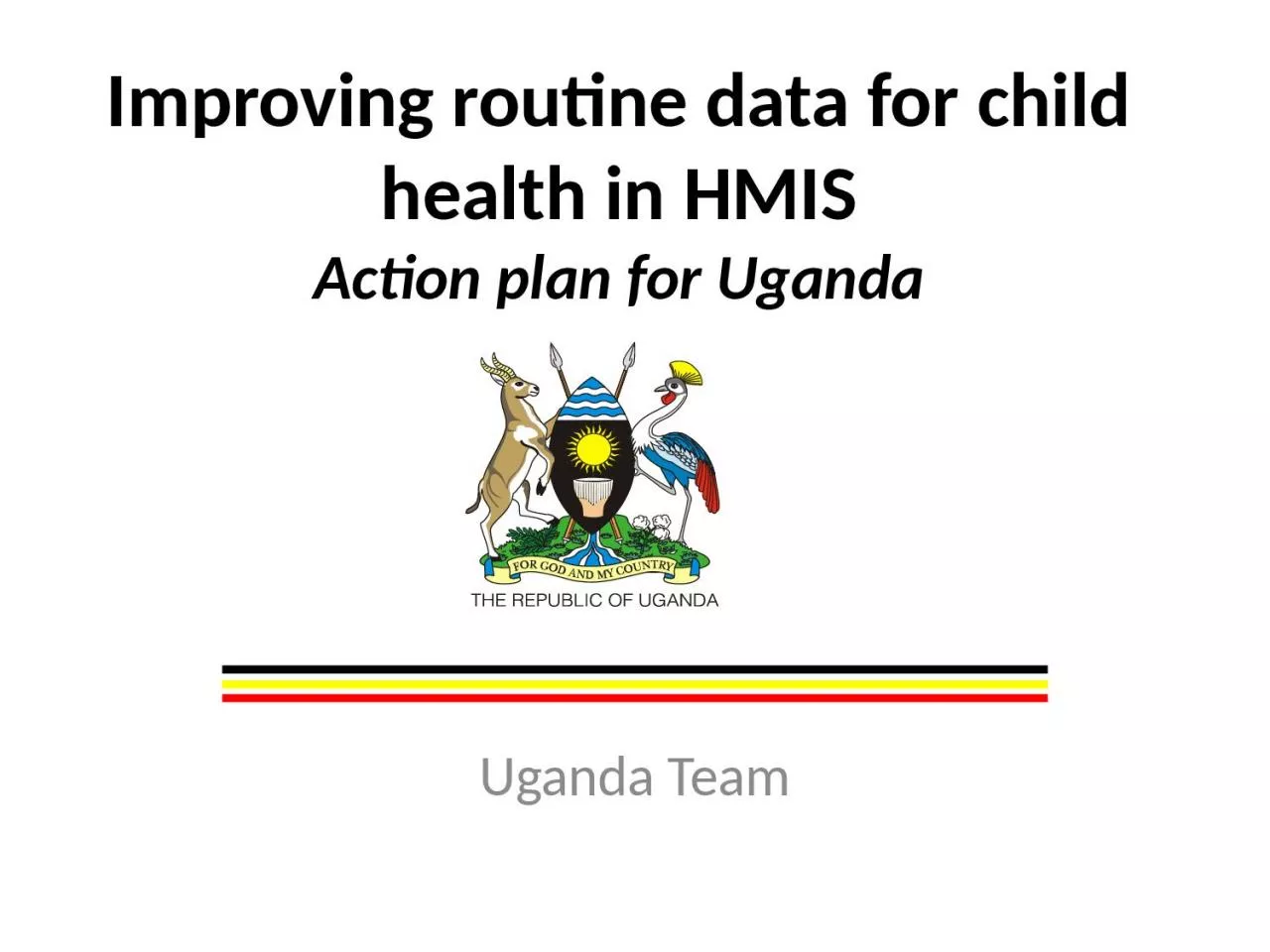

Action plan for Uganda Uganda Team Map of Uganda Total population 346m 2014 Children data 04yrs177 59yrs16 1014yrs142 1519yrs114 lt18yrs 55 Literacy rate 722 Fertility rate 1519yrs 25 ID: 930651
Download Presentation The PPT/PDF document "Improving routine data for child health ..." is the property of its rightful owner. Permission is granted to download and print the materials on this web site for personal, non-commercial use only, and to display it on your personal computer provided you do not modify the materials and that you retain all copyright notices contained in the materials. By downloading content from our website, you accept the terms of this agreement.
Slide1
Improving routine data for child health in HMISAction plan for Uganda
Uganda Team
Slide2Map of Uganda
Total population 34.6m (2014)Children data0-4yrs-17.7%
5-9yrs-16%10-14yrs-14.2%15-19yrs-11.4%<18yrs – 55%Literacy rate -72.2%Fertility rate (15-19yrs) – 25%
Slide3Uganda: At the Beginning of the Demographic Transition
Slide4Health Care System In Uganda
Slide5Trends in Child Mortality
10/11/2017
FOOTER GOES HERE5
Under 5 mortality ratio. Target 25
Infant mortality ratio
Neonatal mortality ratio
Target by 2030: 10
Slide6Trends on Child Mortality
Slide7Nutrition Trends
10/11/2017
7
Targets SDG 2030
Stunting <20% Wasting<5%
Slide8Child Health Data Use: What have we learned?
Slide9Country
experiences
What have we learnt?Digital
health information systems are critical for improving quality and timeliness in reporting especially at community level
Mobile technology to support CHWs
and HWs to screen clients, diagnose and report real time are available as open source and have interoperability with DHIS II e.g. medic mobile, open SRP,
IeDA
All systems linked to the national health observatory system critical for
MoH
to track and monitor progress
Indicator mapping in relation to National
and
Global indicators is critical.
E.g
Child survival strategy, Sharpened plan, ENAP, EWEC, SUN
Harmonization
of indicators is critical for tracking progress in child health
Engagement
of the private sector in reporting and using child health data is
important to improving child health outcomes
Nigeria adopted use of quality of care standards within the accreditation guidelines to
access health insurance schemes.
Slide10Country
experiences
What have we learnt?Data use of
quality improvement at all levels of the health sector from national to community level important to sustain improvement in quality, timeliness and outcomes
Use of RMNCAH scorecard for administrative or political leadership very good for their response
Infusing simple data use tools within existing structures useful to support planning and drive improvement towards results.
Capacity building at all levels of planning including
national, district, HSDs and community levels
National
strategy that addresses how partners engage in contributing to a comprehensive M&E platform (one country HMIS system) is critical to aligning partners.
In addition, establishing a country data collaborative with TA from global collaborative (WHO secretariat) has been beneficial to bring all stakeholders together to arrive at one platform.
Slide11Data Use: What Next?Share with MoH and key stakeholders what we learned from the conference-MCSP
Share community related lessons at the iCCM task force meeting- Living GoodsFacilitate indicator mapping against required national and global reporting- MCSP
Explore need for country data collaborative